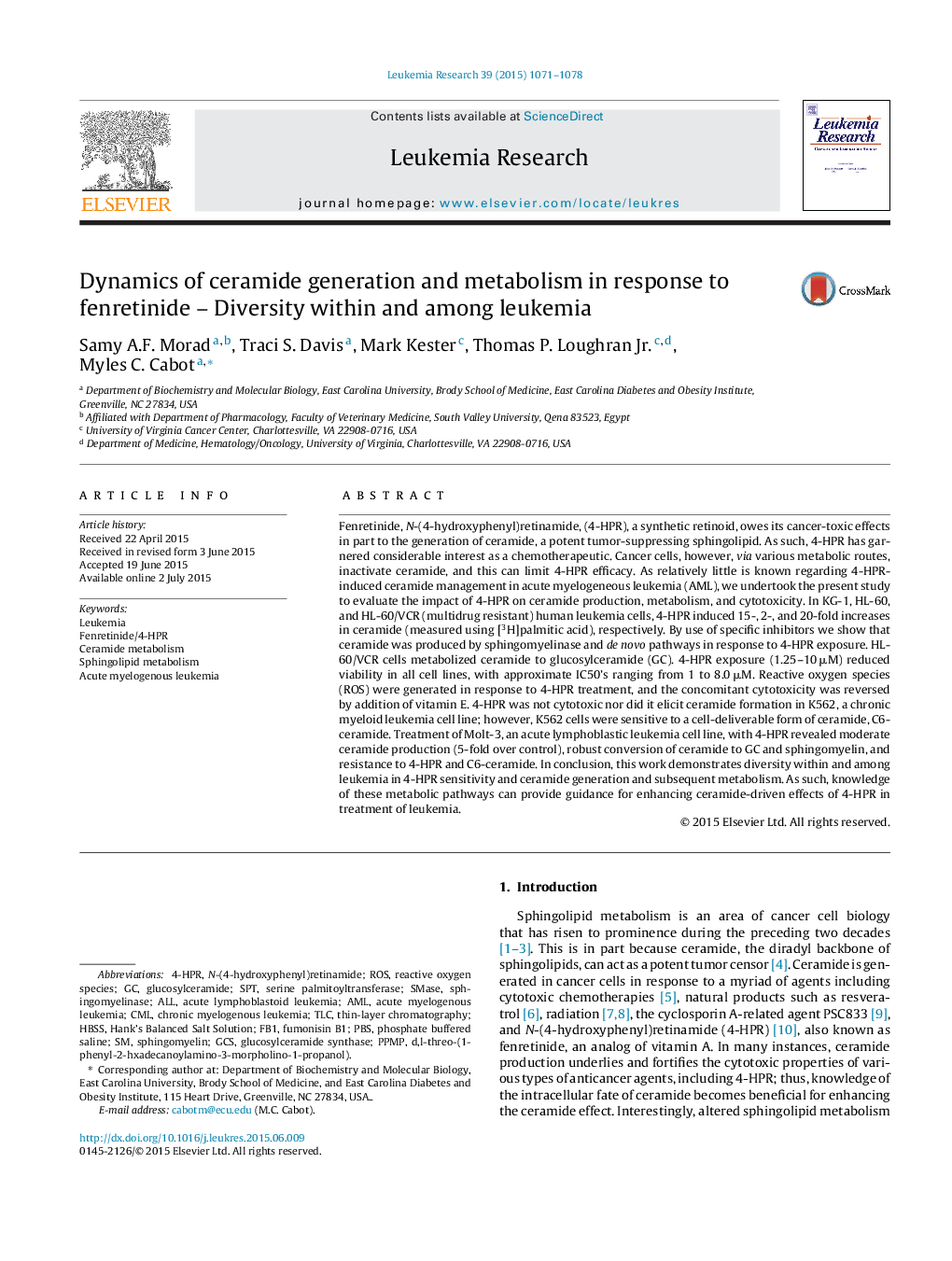| کد مقاله | کد نشریه | سال انتشار | مقاله انگلیسی | نسخه تمام متن |
|---|---|---|---|---|
| 2136502 | 1087792 | 2015 | 8 صفحه PDF | دانلود رایگان |

• Leukemias display diverse sensitivities to fenretinide.
• Fenretinide enhances ceramide levels by de novo and sphingomyelinase pathways.
• Ceramide is metabolized differently in different leukemias (AML, CML, CLL).
• Dysfunctional ceramide generation correlates with fenretinide resistance.
• Ceramide metabolic signatures can be helpful in directing clinical use of fenretinide.
Fenretinide, N-(4-hydroxyphenyl)retinamide, (4-HPR), a synthetic retinoid, owes its cancer-toxic effects in part to the generation of ceramide, a potent tumor-suppressing sphingolipid. As such, 4-HPR has garnered considerable interest as a chemotherapeutic. Cancer cells, however, via various metabolic routes, inactivate ceramide, and this can limit 4-HPR efficacy. As relatively little is known regarding 4-HPR-induced ceramide management in acute myelogeneous leukemia (AML), we undertook the present study to evaluate the impact of 4-HPR on ceramide production, metabolism, and cytotoxicity. In KG-1, HL-60, and HL-60/VCR (multidrug resistant) human leukemia cells, 4-HPR induced 15-, 2-, and 20-fold increases in ceramide (measured using [3H]palmitic acid), respectively. By use of specific inhibitors we show that ceramide was produced by sphingomyelinase and de novo pathways in response to 4-HPR exposure. HL-60/VCR cells metabolized ceramide to glucosylceramide (GC). 4-HPR exposure (1.25–10 μM) reduced viability in all cell lines, with approximate IC50's ranging from 1 to 8.0 μM. Reactive oxygen species (ROS) were generated in response to 4-HPR treatment, and the concomitant cytotoxicity was reversed by addition of vitamin E. 4-HPR was not cytotoxic nor did it elicit ceramide formation in K562, a chronic myeloid leukemia cell line; however, K562 cells were sensitive to a cell-deliverable form of ceramide, C6-ceramide. Treatment of Molt-3, an acute lymphoblastic leukemia cell line, with 4-HPR revealed moderate ceramide production (5-fold over control), robust conversion of ceramide to GC and sphingomyelin, and resistance to 4-HPR and C6-ceramide. In conclusion, this work demonstrates diversity within and among leukemia in 4-HPR sensitivity and ceramide generation and subsequent metabolism. As such, knowledge of these metabolic pathways can provide guidance for enhancing ceramide-driven effects of 4-HPR in treatment of leukemia.
Journal: Leukemia Research - Volume 39, Issue 10, October 2015, Pages 1071–1078